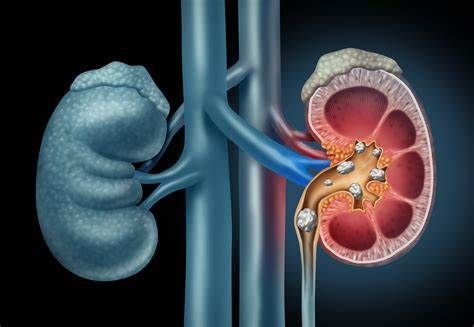KIDNEY STONES
Some Kidney Stone Facts
1. The highest incidence is seen in the Southeast United States
2. More common in men than women
3. Peak age group is 30 to 50
4. Can be genetic
What are kidney stones?
Kidney stones are composed of salts and minerals found in the urine, which clump together to create tiny "pebbles." These stones can vary in size, ranging from as small as grains of sand to completely filling the kidney's collection system. While they initially form in the kidney, they may cause a blockage in urine flow if they get stuck in the ureter—a tube linking the bladder to the kidney.
What causes kidney stones?
Kidney stones develop when there is a disruption in the usual equilibrium of water, salt, and minerals present in urine. Crystallization takes place when specific metabolites become overly concentrated in the urine.

What are the symptoms
What Are Kidney Stones?
Kidney stones are hard mineral deposits that can cause sudden, intense pain—often starting in the back or side and moving to the lower abdomen as the stone travels toward the bladder. This pain results from a blockage in the urinary system.
Common Symptoms
- Sharp back or flank pain
- Nausea and vomiting
- Blood in the urine
- Frequent or painful urination
⚠️ Fever or chills may signal a serious infection—seek medical attention immediately.
What Happens Next?
Most small stones pass naturally within six weeks. Larger stones can get stuck, especially near the bladder, and may lead to infection, bleeding, or kidney damage. Some stones harbor bacteria, causing chronic urinary tract infections (UTIs) and impairing kidney function.
Kidney Stone Treatment Options
Treatment depends on the size, location, and type of your kidney stone.
Common options include:
- Observation: Small, symptom-free stones may pass on their own. Medication can help manage discomfort.
- Shock Wave Therapy (ESWL): A non-invasive, outpatient procedure using sound waves to break up stones so they can pass naturally. Minimal recovery time.
- Ureteroscopy: A small scope and laser are used to treat stones in the ureter or kidney. Highly effective, with over 95% stone-free success.
- Percutaneous Lithotripsy (PCNL): For large or complex stones, instruments are inserted directly into the kidney. This option may require a short hospital stay but offers excellent results.
The need for major surgical procedures is infrequent and reserved for a small number of patients in which other methods fail or which certain co-existing conditions or infections.
Preventing Future Kidney Stones
Once you’ve had a kidney stone, your risk of getting another increases. Dr. Griffith may recommend personalized prevention strategies based on the cause of your stones.
For most people, the key is drinking more water—enough to produce at least 2.5 liters of urine daily.
Other tips may include:
- Avoiding high-oxalate foods (like chocolate, tea, nuts, and dark leafy greens)
- Reducing salt and animal protein
- Moderating calcium intake
- Taking prescribed preventive medications
Dr. Griffith can also order specialized tests to guide your long-term kidney stone prevention plan.

